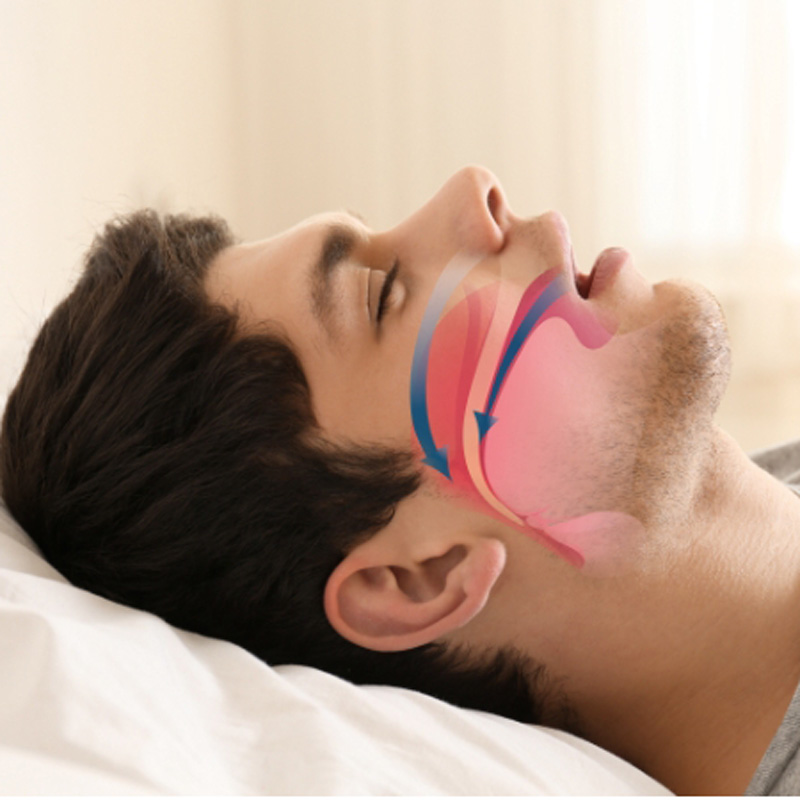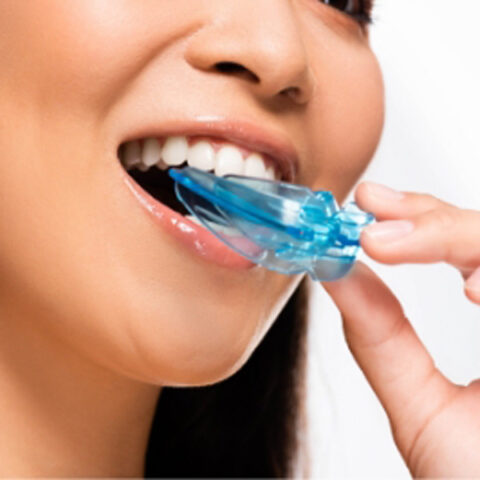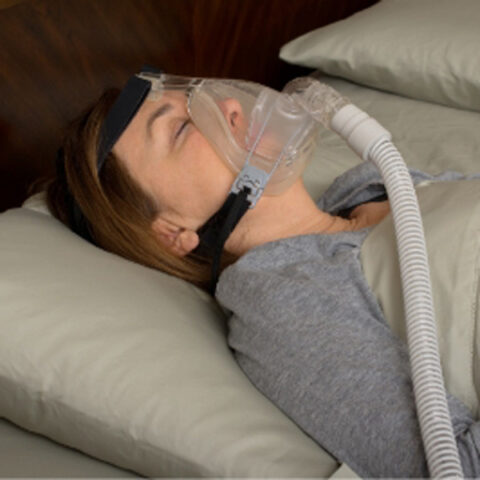Sleep Apnea Treatment
What Is Sleep Apnea?
Have you ever been told that you stop breathing while asleep, or that your snoring is interrupted by pauses, gasps, or snorting noises? These are signs that you may be suffering from sleep apnea. Sleep apnea is a condition that can be extremely disruptive and frustrating to a bed partner, and can also be quite harmful to patients’ health.
This sleep disorder blocks airways, making it difficult or impossible to breathe when sleeping. When breathing stops, the body repeatedly wakes up, leaving patients gasping for air. Those suffering from sleep apnea could potentially be woken up dozens to hundreds of times during the night and not even know it, resulting in feeling groggy and unrested in the morning.

Dangerous Effects of Sleep Apnea
A majority of those who are affected by sleep apnea do not ever seek diagnosis, and remain untreated. There are immediately recognizable effects, however, which can include: an ongoing sense of irritability or depression, night sweats, restless sleep, awakening in the morning with a sore throat or a headache, experiencing sudden unexplained awakenings during the night, nodding off when sitting or driving, and poor performance at work or school.
Chronic sleep deprivation and sleep apnea can lead to a plethora of issues and complications for the body. Lack of sleep could lead to an increased risk of obesity and diabetes, and shorter sleep times lead to high blood pressure, stroke, and heart disease.
Sleep Apnea Treatment Options
There are a number of ways that sleep apnea can be treated, and no single solution is right for all patients. Your sleep apnea may be treated with the use of a CPAP machine, lifestyle changes, through surgery, or by using an oral appliance to open up the blocked airways. Lifestyle changes may be sufficient to help some with milder cases of sleep apnea, but more acute cases will often require medical involvement provided here at the Dental Sleep Center of Wellington, FL.

Oral Appliances
Oral appliance therapy is a proven and highly effective treatment method for many sleep apnea cases, with success rates as high as 90%. According to the American Academy of Sleep Medicine, oral appliances are now considered as the first and foremost treatment for mild to moderate cases of sleep apnea. An oral appliance is a small, custom-made mouthpiece that fits comfortably into the patient’s mouth, and allows the patient’s airways to remain open while sleeping.

CPAP Therapy
The most commonly prescribed device for the treatment of sleep apnea is the use of a continuous positive airway pressure (CPAP) machine. This high-tech device can improve your quality of life and boost your overall health. The CPAP does all of the work while you sleep by increasing air pressure in your throat so that your airway remains open and unobstructed as you inhale. CPAP therapy is typically offered to patients who require a more advanced treatment method than oral appliances.

Do I Have Sleep Apnea?
Some of the symptoms of this sleeping disorder include:
- Snoring
- Tiredness or Fatigue
- Waking Up During the Night
- Weight Gain
- Heart Abnormalities
- GERD
- Behavioral Problems in Children
- Irritability
- Depression
- Multiple Trips to Pass Water
- Erectile Dysfunction
- Morning Headaches
- Red Throat
- Large Neck Circumference
Sleep Apnea in Children
Childhood Obstructive Sleep Apnea generally affects children between 2 and 6 years old, but children outside of that age range can also be diagnosed with the disorder. Typically, the condition presents as enlarged tonsils or adenoids obstructing the child’s airways, but other factors such as obesity can also impact nighttime breathing. Your child may have sleep apnea if they are exhibiting symptoms such as: mouth breathing, loud snoring, tossing and turning, sleep-walking, sleep-talking, hyperactivity, or wetting the bed.
While many cases of childhood sleep apnea can resolve themselves on their own, untreated pediatric sleep apnea can lead to other problems, such as: behavior similar to ADHD, hormonal and metabolic issues, obesity, stunted growth, and behavioral disorders.
